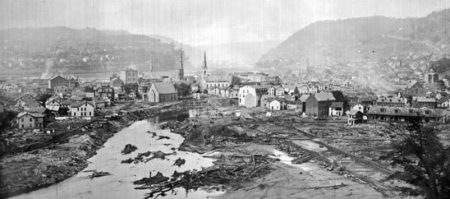
The Johnstown disaster was the worst dam failure in the history of the U.S., with over 2,200 lives lost. Recent crises, like the failure of the Edenville and Sanford dams in Michigan, highlight the poor condition of many dams in the U.S., according to the Association of State Dam Safety Officials.
Dams provide a life-sustaining resource but are innately hazardous structures. Failure or misoperation can result in the release of the reservoir contents, causing negative impacts upstream or downstream or at locations remote from the dam. Dam failures have caused loss of human life, economic loss including property damage, lifeline disruption and environmental damage. Without proper maintenance, routine inspection, necessary upgrades and coordinated emergency planning, the risks become greater. It is of the utmost importance that those living near dams know their risks. Communication helps increase knowledge, understanding and awareness of dams and the risks dams pose.
“The dam safety community … asks policymakers, lawmakers, and citizens to remember that dam safety is a shared responsibility and to recognize that the risks associated with dams can affect everyone,” ASDSO said.
There are more than 90,000 dams in the National Inventory of Dams, and thousands of the most critical high-hazard potential (HHP) dams in the U.S. do not meet current safety standards. As of 2021, there are about 16,500 HHP dams in the U.S., defined by the majority of state dam safety regulatory programs and federal agencies as a dam in which failure or misoperation will probably cause a loss of human life. The American Society of Civil Engineers (ASCE) gave the nation’s dams a grade of D in its 2021 Infrastructure Report Card.
The current debate is over the increasing number of these high-hazard structures because more development is occurring downstream. Dam safety regulators generally have no control over local zoning issues or developers’ property rights, and so this continues to worry regulators as the “hazard creep” trend persists.
State dam safety programs oversee classification, permitting and inspection of dams; provide enforcement; oversee remediation of deficient dams; and work with local officials and dam owners on emergency preparedness. Some states are unable, by specific language in their law, to regulate certain types of dams, allowing these structures to fall between the regulatory cracks. Other states have limited ability to enforce the law. In some states, officials have no recourse if dam owners do not carry out safety repairs ordered by the state.
In a 2023 report, ASDSO estimated that the cost to rehabilitate the nation’s non-federal dams is $157.5 billion. The cost to rehabilitate just the most critical dams was estimated at $34.1 billion, a cost that continues to rise as maintenance, repair and rehabilitation are delayed. Many dam owners, especially private dam owners, find it difficult to finance rehabilitation projects.
Recently, the Biden Administration and the 117th Congress recognized the federal government’s role in improving dam safety by including about $2 billion in the Infrastructure Investment and Jobs Act. This funding, among other things, supports a HHP dam rehab grant program through the FEMA National Dam Safety Program.